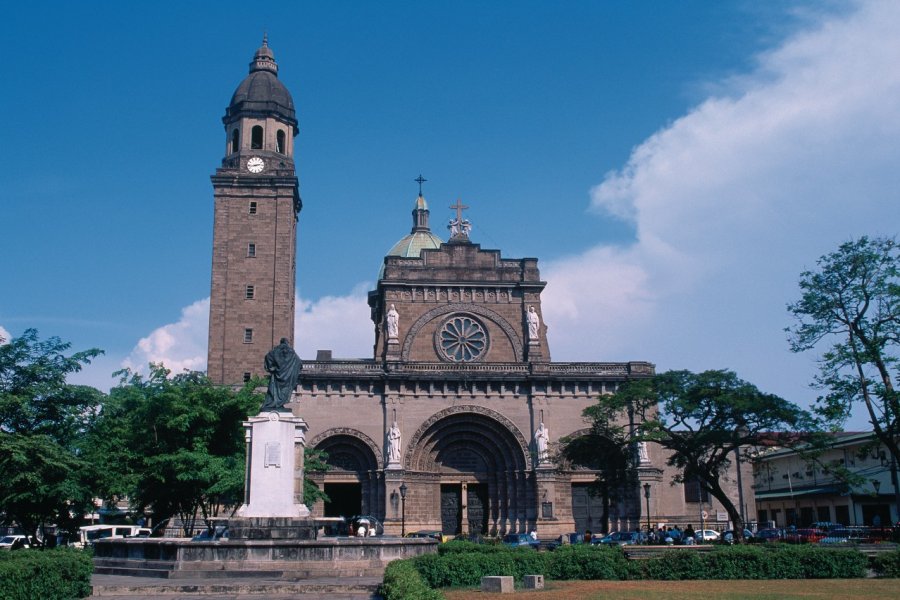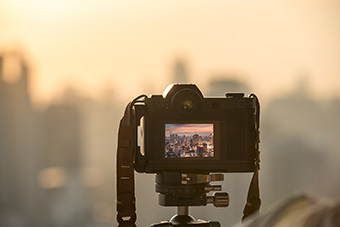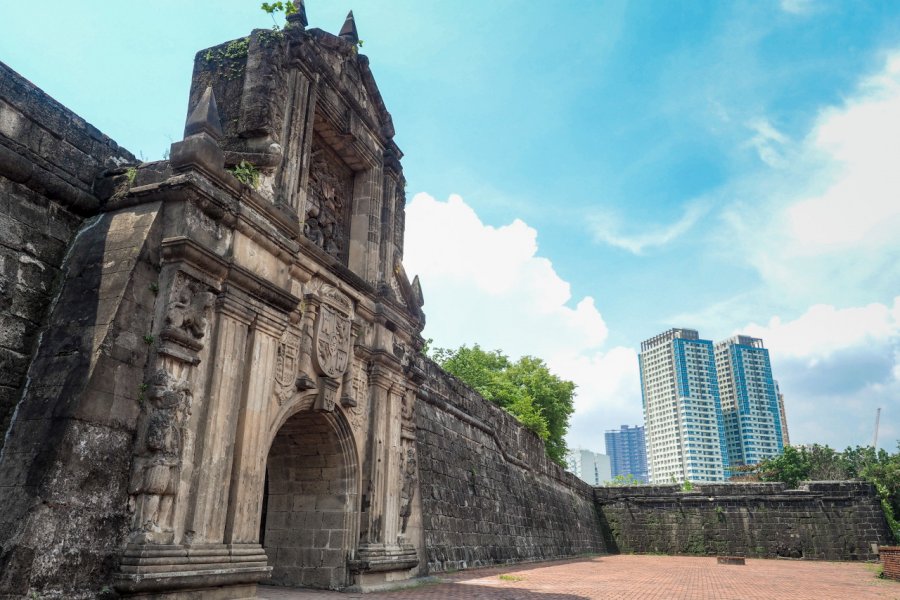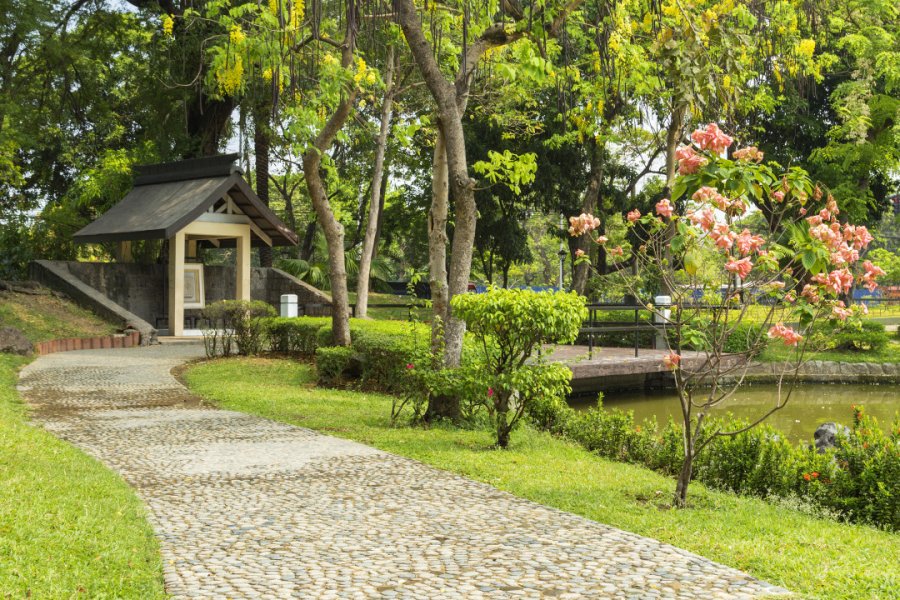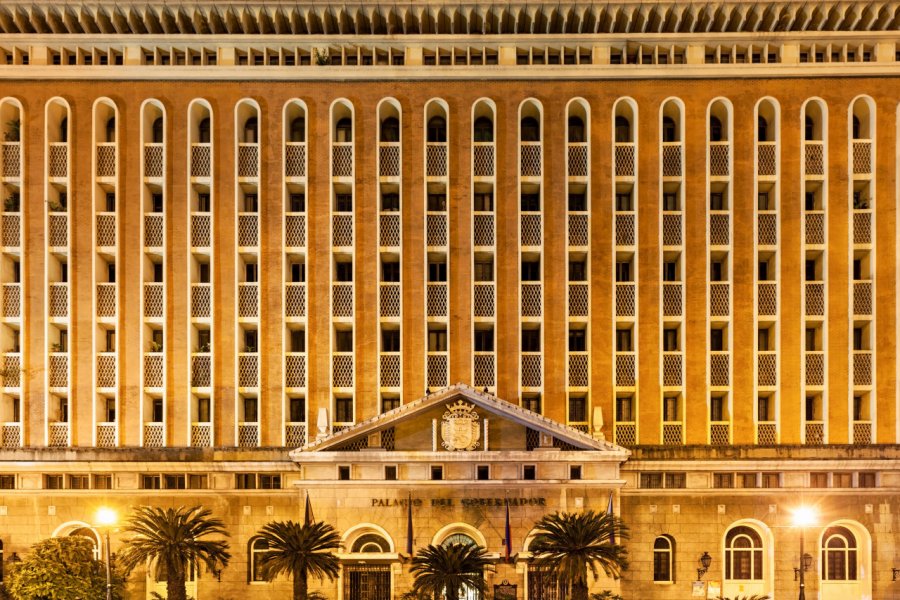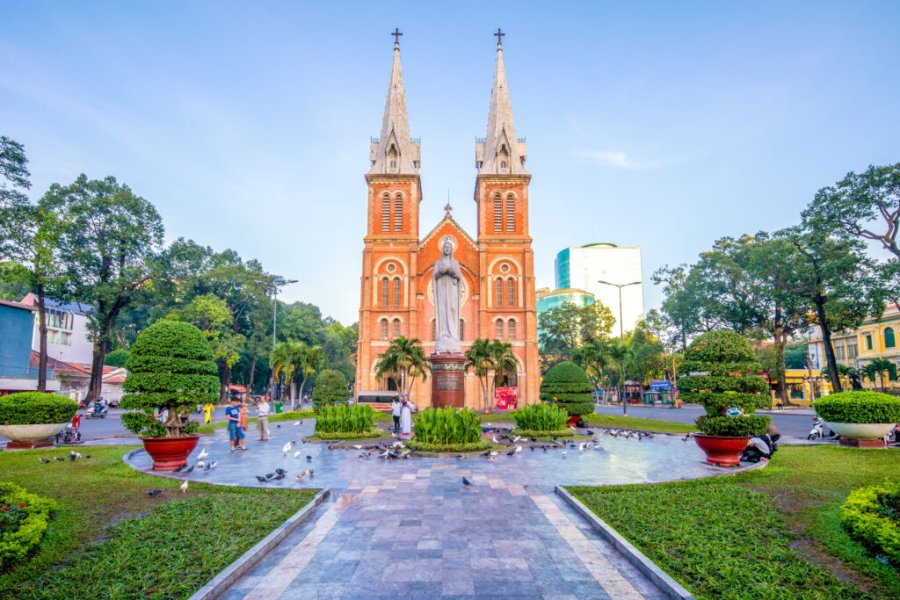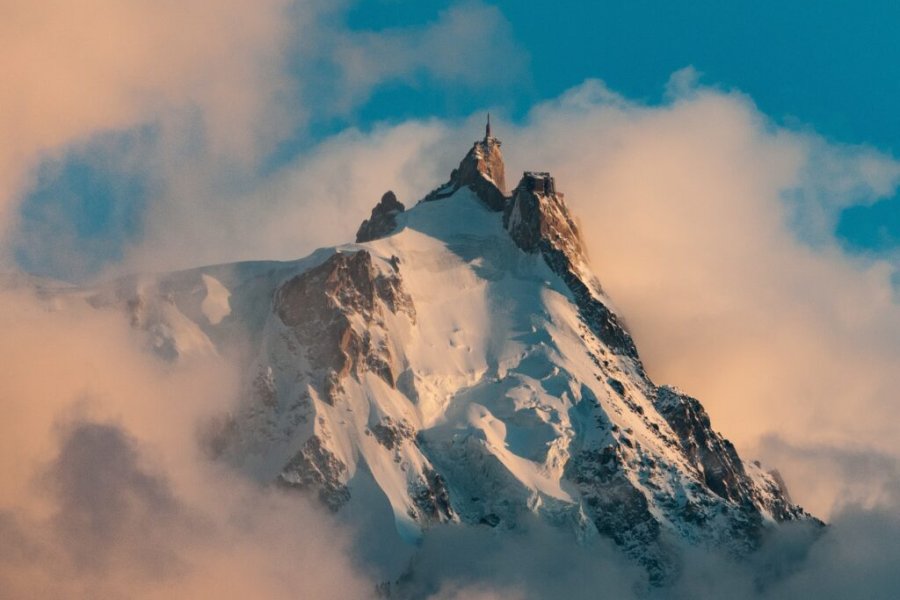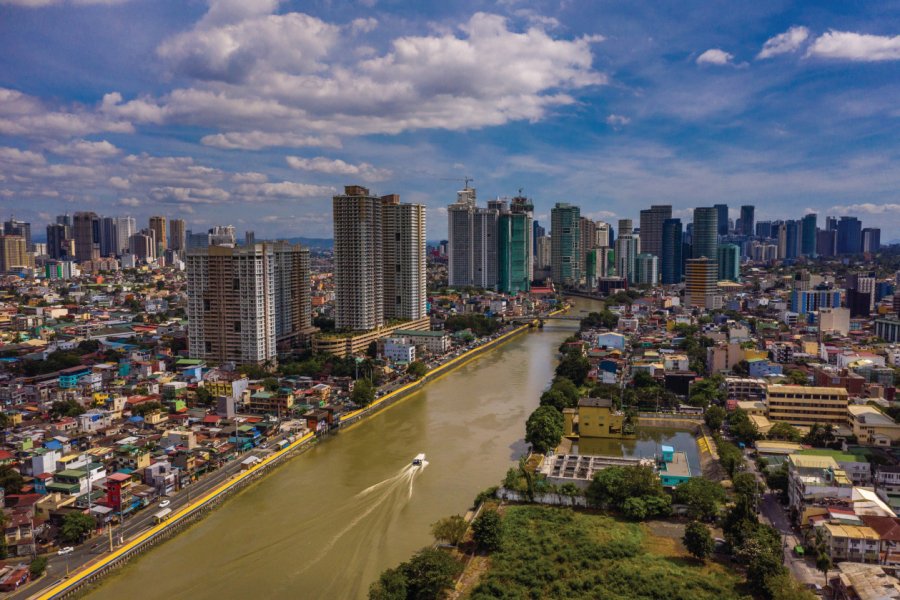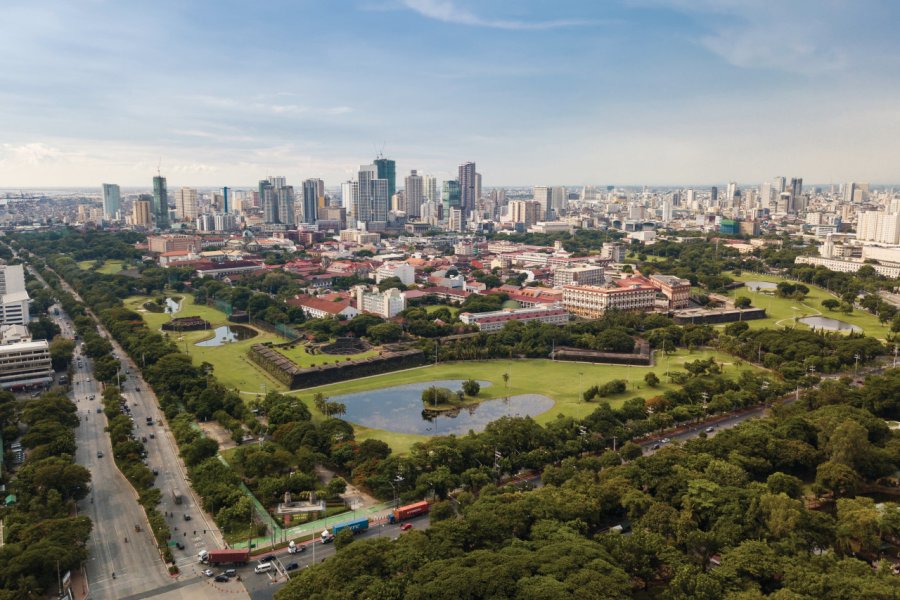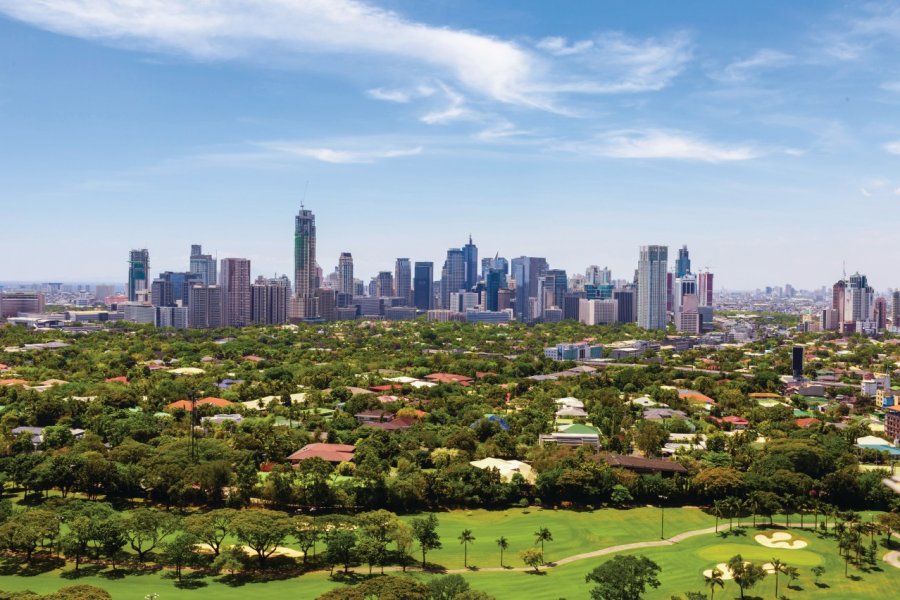Travel Guide Manila
Huge, sprawling, overcrowded, Manila, the capital of the Philippines, is a fascinating destination in every respect. In the north of the archipelago, on the island of Luzon, known for its mountains, beaches and coral reefs, it is nestled on the Chinese Sea side, in a deep bay on which the sunsets are an enchantment. Manila boasts remarkable and eclectic architecture with a skyscraper district (Makati), buildings that bear witness to Spanish colonization, a centuries-old Chinatown and many museums. In the heart of the old colonial city, among other historic buildings, there is Fort Santiago, a former military prison and a multi-storey citadel, and the Baroque church of Saint Augustine (16th century). We discover the popular Rizal Park (Luneta) which was the site of many public executions during the Spanish era, including that of the national hero José Rizal (1861-1896), poet, novelist and doctor engaged in the struggle for emancipation in the country. A marble sanctuary has been erected in his honour, marking the zero kilometre of the Philippines. Manila Ocean Park charms lovers of underwater fauna with thousands of species native to Southeast Asia. This giant oceanarium invites you to walk under a glass tunnel as if immersed with a direct view of manta rays and other fish or to board a glass floor boat sailing on the inner basin. You will, of course, enjoy street food throughout the day and a lively nightlife, accompanied by your tour guide.
What to visit Manila?
Suggested addresses Manila
When to go to Manila?
When to go to the Philippines and stay in Manila? The high tourist season, and the best time to go to the Philippines and Manila, is from the beginning of November to the end of February-beginning of March and during the Holy Week (March-April). The low tourist season is from June to October (lower rates most of the time). This monsoon period is usually punctuated by about 20 typhoons that cross the country. However, many travelers went around in August-September and had very good weather (especially in Palawan). If we had to rename the Philippines, we would certainly call this archipelago the one of festivals. They are very numerous and all very rich in colors. The locals invite visitors to their homes to share not only food, but also some good times. So, no matter when you visit the Philippines and Manila, you can attend one of the many festivals.
Weather at the moment
The Philippines and Manila have a tropical, hot and humid climate all year round. The average humidity is 77% and the average temperature is 25°C in the Philippines. Most of the country experiences a monsoon climate, with a dry season, more favourable to tourism from November to March, when temperatures vary between 22°C and 28°C. Only southern Mindanao is characterized by an equatorial climate.
The cost of living is lower in the Philippines than in Europe, but tourists often use expensive services (car rental...) which make the bill go up. For backpackers, the Philippines are still very cheap. The currency is the Philippine peso but the dollar, more stable, is often accepted. There are vending machines in the major cities, but you should bring cash for small purchases. You can usually leave a 10% tip.
For a stay of 30 days (maximum) in the Philippines and Manila, no visa is required for the majority of visitors. Above this period of stay, you will need to apply for a visa extension. The latter is very easily obtained at one of the immigration offices scattered throughout the Philippines.
No vaccinations are required for a trip to the Philippines and a stay in Manila. However, it is recommended to be vaccinated against diphtheria, tetanus, whooping cough and polio, as well as hepatitis B, typhoid and hepatitis A, and possibly rabies and Japanese encephalitis. Anti-malarial treatment is strongly recommended. In addition, use mosquito repellent in general and wear long clothing to also avoid contracting dengue fever. Water is not drinkable in the Philippines, you should drink bottled water or purify water with suitable tablets.
Practical information
- When to travel?
- Weather forecast
- Budget
- Formalities
- Health
- How to travel by yourself?
- How to get organized?
- Getting around
Media
How to go to Manila? Our advice & tips
Most tours in the Philippines last 15 days, but count a good 20 days for a grand tour of the archipelago. Different thematic stays are offered by the travel agencies over two weeks: an adventure and trekking tour around the rice terraces and volcanoes, or a tour around the dream beaches and diving in a Palawan/Bohol combination, for example.
Discover our selection of travel agencies for this destinationThe Philippines poses little risk to independent travellers. There are few thefts, but it is better to leave your valuables in a hotel safe, especially in Manila. When travelling to Mindanao, you should know that you are taking some risks, as some areas such as Zamboanga are considered the stronghold of armed groups that organize kidnappings for ransom. Apart from this area, the rest of the Philippines is not a problem.
It is easy to get around the archipelago by plane and with the ferries that serve the islands. The most picturesque means of public transport are the jeepneys, former jeeps of the American army converted into minibuses. There are also the sea jeepneys, the bangkas, small wooden boats that connect the islands and can be rented by the day. In Manila, you can count on the Manila Light Rail Transit System, the LRT.

